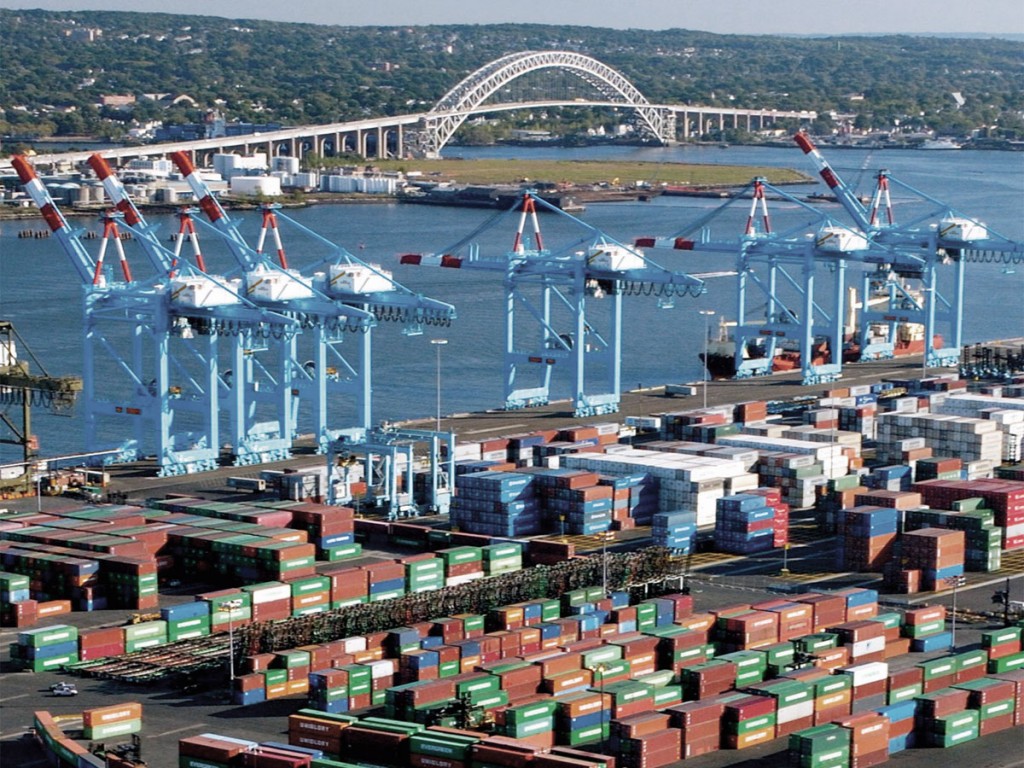Call it the COVID economy. The lockdowns of March and April 2020 caused economic activity nationwide to plummet. Later reopenings—but with a widespread public acceptance of a stay-at-home lifestyle and combined with government stimulus dollars—allowed economic activity to increase in recent months.
The COVID economy has seen discretionary spending on travel and hospitality fall off a cliff, while more disposable income is going for consumer goods. Staying at home has also led to the much-noted acceleration of the e-commerce trend.

E-commerce and COVID
According to Census Bureau figures, e-commerce grew 17% during the second quarter, even as total retail sales fell by 8%. Non-store retail grew from 33.8% to 40.5% of the total during the pandemic.
These trends are reflected in developments in and around the Port of New York and New Jersey. In April, cargo volumes were down 7.5% compared to the year before. By August, which saw a 1.3% increase year-over-year, the port was setting container-volume records. The hot industrial real estate market in the port region reflects the growth of e-commerce, as distribution and fulfillment centers are positioned closer to consumers. (See boxes on page 8 and 10)
“When you look at the data, you see an increase in the deliveries of home goods,” said Sam Ruda, the Port Authority’s port commerce director. “Appliances, for example, are up. Interestingly, so are beer, wines, and spirits. On the other hand, apparel is down” as people don’t dress up for working at home.
“Earlier on in the pandemic, we were seeing retailers cancelling their fall lines,” said Jon Poelma, managing director at APM Terminals in Elizabeth, New Jersey. “Once people started shopping more, stores started restocking products that enhance life at home,” like appliances and electronics.
Of course, keeping the cargo moving during the pandemic required an extraordinary level of cooperation between labor and management. To that point, Poelma said, “We [APM Terminals] want to recognize our Labor partners who have showed up every day to work at the port this year throughout the pandemic. Thanks to them the wheels of global commerce kept turning. We have worked closely with them to ensure our work environment and container-handling equipment was disinfected. Hand washing stations were added throughout the terminal, masks and sanitizer distributed and many other measures were taken. We spared no expense in protecting our frontline essential workers at the terminal. Their safety and health protection were our top concern,” added Poelma.

The diversion of cargo from West Coast to East Coast ports, including NYNJ, has accelerated during the pandemic. Ruda credits “rail economics” for that phenomenon. “There has been a shift especially in intermodal discretionary cargo away from the West Coast and to the East Coast,” he said.
The first eight months of this year saw an increase of 1.4% in rail volumes over 2019, according to Port Authority figures, while containers moving by rail spiked by 7.8% in August year over year. On-dock rail service at GCT’s Bayonne facility began last year.
“Some growth is being driven by production shifts to South East Asia, widening of the Panama Canal, and harbor deepening in NYNJ,” said John Atkins, president of GCT USA. “We expect the production shift away from China to continue for the foreseeable future.
“On-dock rail operations enhance service levels with fast, seamless connections to inland destinations,” he added. “Our first and last port-of-call advantage creates some of the fastest transit times for rail cargo. We have seen exponential growth in intermodal in NYNJ over the past year and look forward to continuing the trend.”
Intermodal offerings are also an important selling point for container terminals at the port. “We are after intermodal freight,” said Poelma. “We are seeing rail volumes increasing significantly.”
Economic Power of Wind
The interest in handling offshore wind equipment has been gathering momentum in many ports across North America, and the Port of New York and New Jersey is no exception. “Wind is in on the radar screen,” said Ruda. “It is an evolving business opportunity and we have been looking closely at it.”
The challenge is to find the required lay-down areas for the unwieldy towers, acreage which is hard to come by in the region. The South Brooklyn Marine Terminal, which is being redeveloped, has advanced its candidacy as an offshore wind port.
So, have APM and GCT New York. “We are a terminal adept at handling out-of-gauge cargo and we regularly handle yachts,” said Poelma. “We are looking at how we can be a part of the wind supply chain.” Atkins describes GCT New York’s location on Staten Island as “perfect” to “facilitate construction of offshore wind farms.”
Meanwhile, Atlantic Offshore Terminals, a company organized in 2018, is developing the 30-plus acre Arthur Kill Terminal, near Staten Island’s southern tip, as an offshore wind staging area. The route between that location and the open ocean is unobstructed by bridges that would jeopardize the preferred vertical transportation of towers to offshore sites.
Navigating Through the Pandemic
Ruda credits Port Authority and labor leadership for the successful operation of the port during the pandemic. “We play a role in calling stakeholder meetings,” he said. “We have developed good cooperation among terminals, truckers, labor, and employers.”
Poelma might think that too modest of an assessment. “I give Sam Ruda and the Port Authority a lot of credit for their leadership through a tough environment,” he said. “We had weekly crisis management calls where best practices were shared. With that kind of collaboration, there’s no room for finger pointing.”
Ruda expects the port’s September numbers to follow in step with August’s records. “We’re still down,” said Ruda, “but I suspect that we’ll make up a lot of that in the last several months of the year.”
The peak shipping season, now getting under way, is going as expected, according to Poelma. “We expect the next few months to be quite strong,” he said.
Still, the pandemic is far from over and challenges remain. Even with the record August numbers, container traffic at the port remained at a 6.7% deficit for the year.
And the COVID economy is still with us. Infections and unemployment are now on the upswing, and school closings represent a continued drag on the economy.
“As long as schools are closed in large numbers,” noted Heil, “parents have no choice but to work from home,” with all of the economic implications that entails.





